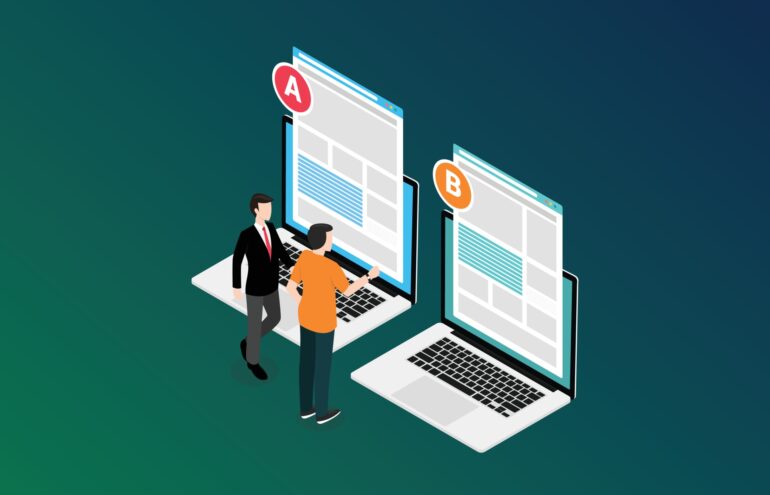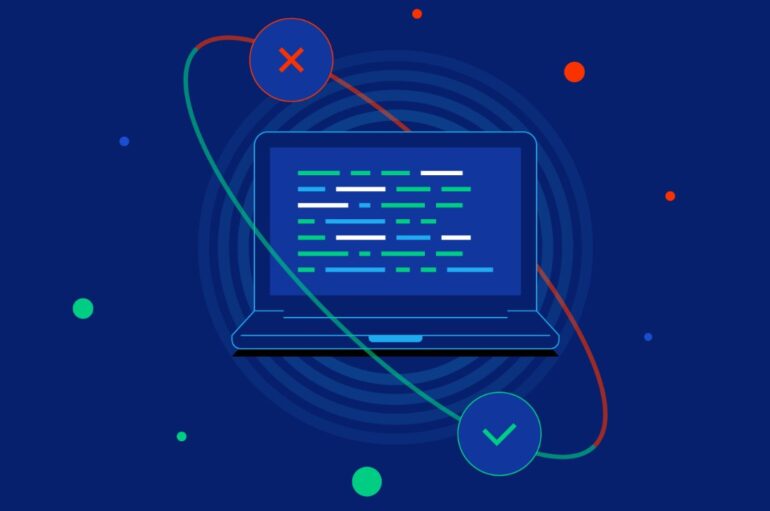In today’s landscape, automation testing approaches have evolved to become more sophisticated than ever. Users now demand not only textual content and images but also interactivity and a seamless experience akin to traditional desktop software.
With the heightened complexity involved in designing such advanced and interactive websites, rigorous testing becomes a paramount requirement for ensuring their proper functionality.
Comprehensive testing efforts are indispensable to delivering an online application that performs seamlessly for both existing and new users. Many organizations maintain Quality Assurance (QA) teams responsible for manually inspecting their websites for defects.
However, this manual testing approach could be more efficient and susceptible to human error, especially when dealing with large websites featuring extensive functionality. Consequently, numerous application development companies increasingly adopt automation testing as a key strategy.
By automating a significant portion of repetitive testing tasks, QA teams can allocate their focus toward high-value activities, including exploratory testing. It’s important to emphasize that automated testing complements manual testing efforts rather than replacing them, aligning with the evolving needs and expectations of modern software development practices.
What are the benefits of End-To-End Testing?

- Enhanced Quality Assurance: E2E testing plays a pivotal role in ensuring that all facets of a software application harmonize effectively and that it aligns with its intended business objectives.
- Augmented Software Confidence: End-to-end testing instills confidence that the software will perform as expected in real-world scenarios, offering reassurance to stakeholders regarding its reliability and stability.
- Swift Defect Detection: E2E testing is instrumental in identifying defects early in the development cycle, allowing developers to rectify issues before they escalate in complexity and cost.
- Cost Reduction: End-to-end testing contributes to cost reduction by identifying and addressing defects and bugs in the early stages of development, rather than later in the cycle or post-deployment.
- Alignment with Business Requirements: E2E testing ensures that the application aligns with the business requirements, increasing the likelihood of user acceptance.
- Streamlined Testing Process: End-to-end testing streamlines the testing process by evaluating the application from a user’s perspective, rather than scrutinizing individual components in isolation. This facilitates the identification and resolution of issues. Overall, end-to-end testing serves as an indispensable practice for assuring the quality, dependability, and user-friendliness of software applications.
Three Categories of Activities in End-to-End (E2E) Testing
User Operations
To formulate user operations, adhere to the following guidelines:
- Enumerate the functionalities of the software along with their interconnections to sub-systems.
- For each function, meticulously document all actions executed, encompassing input and output data.
- Identify the relationships that exist between different user operations.
- Determine whether each user operation functions independently or is reusable.
Scenarios
- To construct scenarios based on user operations, establish a series of scenarios for each user operation. This may encompass factors such as timing, data conditions, and other elements that influence user operations.
Test Cases
When developing test cases for E2E testing, consider the following:
- Generate multiple test scenarios to comprehensively evaluate each functionality of user operations.
- Allocate at least one distinct test scenario to address each scenario category or condition.
Why is End-to-End Testing Essential?

In today’s software landscape, complex and intricate software systems are constructed, comprising numerous interconnected components. Enterprise-level applications, for instance, can involve an extensive web of dependencies and elements.
Take online banking systems, for instance, which rely on multiple libraries, databases, and third-party services to support core functionalities like user authentication, account management, transaction processing, and reporting. While these individual components may perform as expected in isolation, combining them introduces the potential for conflicts.
A minor glitch in the password database, for example, can disrupt user verification, setting off a chain reaction that impacts the entire application.
To ensure the ultimate quality and reliability of such software systems, it is imperative to simulate the user’s journey through a spectrum of simple to complex interactions. This is where end-to-end testing assumes paramount importance, as it verifies that all the intricate parts of the application collaborate seamlessly and that the final product aligns with user expectations.
When conducted effectively, end-to-end testing is widely embraced for its substantial advantages:
- Enhanced Test Coverage: End-to-end testing extends beyond unit testing and integration testing by scrutinizing all software components, spanning from the API to the user interface (UI).
- Reduced Regression Testing Effort: Once end-to-end testing has been successfully carried out, these tests, which follow the user’s flow, can be automatically executed whenever there are modifications. This allows regression testing to focus on the affected components.
- Optimized User Experience: Executing tests based on end users’ behavior ensures that the application functions seamlessly, delivering a positive user experience.
Key Features of Automated End-to-End Testing Software:
Selecting the right end-to-end testing tool is pivotal for the success of any project. While a plethora of options exist, ranging from open-source to commercial solutions, an ideal test automation platform should encompass the following characteristics:
- Cross-Platform Compatibility: The software should possess the capability to test applications across diverse operating systems, web browsers, and devices to ensure compatibility across various environments.
- Low-Code Test Design: End-to-end testing often involves collaboration among stakeholders with varying levels of coding expertise. Therefore, the chosen platform should offer flexibility, enabling developers to create custom keywords while allowing QA teams to construct tests using a user-friendly drag-and-drop interface.
- Comprehensive Functionality: The ideal tool should encompass features that span the entire end-to-end testing lifecycle, from test planning and execution to result analysis.
- Extensive Integrations: Integration with popular CI/CD and DevOps tools such as Jira, Jenkins, or Docker facilitates seamless collaboration and streamlines the testing workflow.
Automated End-to-End Testing Tools

LambdaTest: Cross-Platform Testing Across Devices and OS
LambdaTest is an AI-powered test orchestration and execution platform to run manual and automated tests at scale. The platform allows you to perform both real-time and automation testing across 3000+ environments including different browsers, mobile OS such as Android and Safari browsers online. Key highlights of LambdaTest include:
- Incorporating AI-powered testing capabilities to simplify processes, expand test coverage, and reduce costs and efforts
- Responsive testing: LT Browser assesses the responsiveness of websites across major devices and viewports.
- Screenshot testing: Generates auto-scrolling full-page screenshots of web pages.
- Test locally hosted websites: Validates pages using LambdaTest Tunnel, an SSH-based integration tunnel.
Autify: No-Code AI-Powered End-to-End Testing Tool
Autify is a test automation tool designed for web and mobile applications. It simplifies end-to-end test automation by enabling users to record interactions with applications using its Chrome extension. These tests can then be executed on various systems, including Windows, Linux, Mac, and various web and mobile browsers.
testRigor: Customizable Test Cases with AI-Powered Automation
testRigor facilitates automated testing through plain, simple commands, making it suitable for manual QA testers with limited programming knowledge. Its AI-powered automation script enhances test coverage with minimal effort. testRigor allows the creation of customized test cases for complex scenarios and seamlessly integrates with test case management systems.
Katalon – Comprehensive Software Quality Management Platform
The Katalon Platform offers an end-to-end test automation solution that supports automated testing at both the UI and API levels. It caters to both beginners and expert programmers, with features like Recorder and Script mode for easy automation. Additionally, users can create custom keywords to address specific testing scenarios.
End-to End Testing Frameworks

Selenium: Web Automated Testing
Selenium comprises a suite of libraries and extensions designed to create a framework facilitating web browser automation. It provides a user-friendly interface for interacting with HTML elements, granting you the flexibility to tailor your tests.
Notable Features:
- Relative Locators: Locate elements using positional references like “above,” “below,” “toLeftOf,” “toRightOf,” and “near.”
- CDP Access: Utilizes Chrome DevTools APIs to simulate network requests and responses, enabling real-time test debugging.
- Smart Object Detection: Employs the “findElement()” method to discover locators such as ID, Name, ClassName, TagName, LinkText, Partial Link Text, XPath, and CSS.
- Window Handlers: Offers “getWindowHandle” and “getWindowHandles” methods to manage the opening and closing of browser tabs.
Cypress: Web UI End-to-End Testing
Cypress User Interface
Cypress serves as a front-end test automation tool designed for debugging the user interface of web applications. Built on the Mocha framework, Cypress primarily addresses issues related to waiting and timing that are prevalent in Selenium. Cypress features a built-in debugging capability and allows you to configure automatic retries and waits.
Notable Features:
- Automatic Waits: Eliminates the need for async/await functions to wait for commands and assertions.
- Cross-Browser Support: Compatible with Firefox, Edge, and Electron browsers
- Dashboard Service: Facilitates parallel and cross-platform test execution, load balancing, and provides insights into test quality.
- CI/CD Integration: Seamlessly integrates with CI/CD platforms such as GitHub Actions, GitLab CI, CircleCI, Bitbucket Pipelines, and AWS CodeBuild.
- Snapshots and Videos: Enables review of prior DOM states to diagnose issues.
Puppeteer
Puppeteer is a novel framework that empowers testers to conduct headless browser testing using Google Chrome. It enables the execution of various tasks in Node.js, such as handling requests and responses, locating elements, monitoring network traffic, and more.
Notable Features:
- Screenshots and PDF Generation: Generates screenshots and PDFs of web pages for debugging, testing, and report generation purposes.
- Network Interception: Allows the interception and modification of network requests, aiding in the testing of web applications and troubleshooting network issues.
- Element Selection and Manipulation: Offers a range of functions for selecting and manipulating HTML elements, streamlining the automation of complex user interactions.
- Modern Web Technologies: Supports contemporary web technologies like ES6, CSS Grid, and Web Components.
Conclusion

Due to the critical significance of end-to-end testing, it should be incorporated into the project planning process from its inception. It’s important to recognize that end-to-end testing is most effectively performed manually because it enables testers to adopt a user-centric perspective.
Nevertheless, if automated testing is deemed necessary, it is advisable to restrict it to less critical functionalities that involve repetitive tasks.
